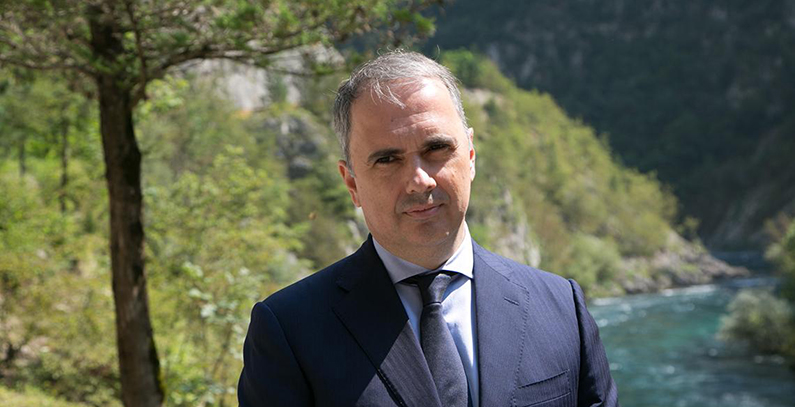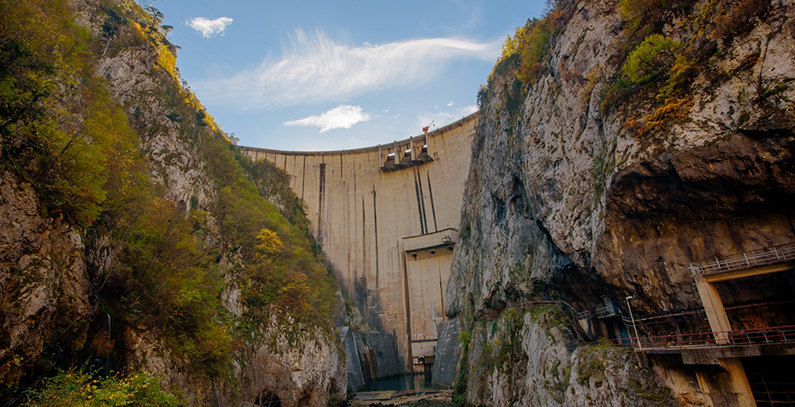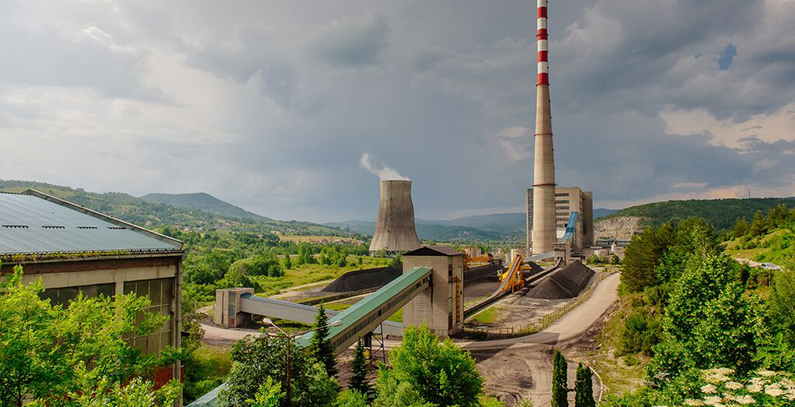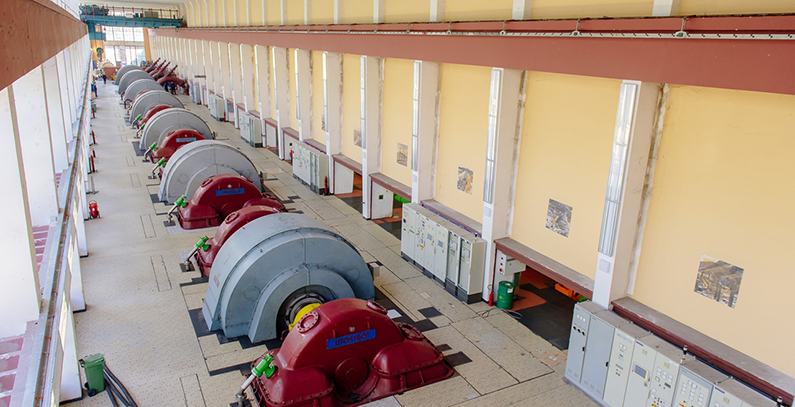
Photo: Igor Noveljić (EPCG)
A Belgrade consortium comprising engineering firm Energoprojekt Hidroinženjering and water management institute Jaroslav Černi has been selected to produce a conceptual design for hydropower plant (HPP) Komarnica, and has already prepared an environmentally acceptable technical solution, which paves the way for the construction of the power plant following decades of research, Igor Noveljić, CEO of Montenegro’s state power utility Elektroprivreda Crne Gore (EPCG), says in an interview with Balkan Green Energy News. The conceptual design is being prepared in cooperation with Serbia’s power utility Elektroprivreda Srbije (EPS).
In the interview, Noveljić also announces EPCG’s new investment projects, talks about the future of coal-fired power plants in the region, and explains what changes will be brought about by the upcoming commissioning of a submarine power line connecting Montenegro and Italy.
Electricity price gaps in Montenegro and the region, as well as comparable EU markets, are increasing, both for households and businesses. What is your take on it? How is this trend affecting EPCG and other power companies across the region?
There are periods when certain disturbances cause price hikes on the market, but end-user prices cannot be expected to go hand-in-hand with such hikes given that end users are supplied through long-term contracts.
Regional governments seek to ensure that liberalization and full deregulation of the market and prices are evolving gradually so as to prevent them from harming the living standards of the population
Overall, I would not agree that price gaps are increasing, simply because electricity prices in Montenegro and countries in the region are gradually moving towards the market price as new competitors emerge and regional energy companies’ monopolies weaken. Underdeveloped markets in countries in the region (Albania, Montenegro, Bosnia and Herzegovina) and weak competition are still indirectly curbing the growth of prices for domestic consumers, but, with an increase of trading, liquidity, and the number of market players, it can be expected for these prices to eventually reach the market price.
One should also take into account the responsible policies of regional governments, which seek to ensure that liberalization and full deregulation of the market and prices are evolving gradually so as to prevent them from harming the living standards of the population.
What is the biggest obstacle to market liberalization in the region?
There are no obstacles. Montenegro’s market was liberalized for households in 2015, and for other consumers, i.e. businesses, in 2009.
The reason why there are still no new suppliers on the retail market in Montenegro is the low price of electricity offered to consumers by EPCG – due to restrictions stipulated by the Energy Law. When it comes to wholesale, a bilateral market does exist, and is fully liberalized, with, if I am not mistaken, over 50 market players.

Electricity prices are directly linked to investment. In a situation where prices are low, how can the country ensure the necessary investment into generation capacities, environmental protection, renewable energy sources, and the introduction of advanced technologies – which are all required as part of the ongoing energy transition?
Despite that, we have been trying to achieve a balance between market prices and the social-economic situation in the country. On the other hand, as you have noted, we must stay on top of technological development and energy transition. For this reason, EPCG launched a new investment cycle in 2018, focusing on the construction of new generation capacities and the overhaul and modernization of existing facilities, with the application of necessary environmental protection measures.
The development of the Montenegrin exchange and the increase of trading volume will provide Montenegro with a benchmark electricity price and make the country even more attractive to foreign investors interested in developing new renewables and industrial facilities
In order to meet the demanding development targets and the requirements of energy transition, we need quality planning and preparation of investment projects, as well as affordable financing from development banks and international finance institutions, and cooperation in the implementation phase with renowned companies – engineering firms, contractors, and equipment suppliers.
EPCG has a traditionally successful cooperation with the World Bank, the German development bank KfW, the European Bank for Reconstruction and Development (EBRD), as well as all major regional and global equipment manufacturers.
Electricity trading is an important source of revenue for EPCG. How will the commissioning of the submarine interconnector between Montenegro and Italy, and the launch of the Montenegrin power exchange, affect EPCG’s business?
Putting into operation the submarine cable between Montenegro and Italy will give EPCG direct access to one of Europe’s biggest markets. We see this as an opportunity to increase trading and the number of partners. It is also an opportunity to boost the volume of market operations and options for optimizing our portfolio.
The development of the Montenegrin exchange and the increase of trading volume will provide Montenegro with a benchmark electricity price and make the country even more attractive to foreign investors interested in developing new renewable energy sources and industrial facilities.
EPCG, like other companies in the region, has an obligation to apply the environmental protection standards prescribed by the Energy Community Secretariat. These are, in fact, standards of the EU, which has clearly defined its energy and climate goals. What, in your opinion, will be the greatest challenges in the application of these standards by EPCG, as well as other companies in the region?
Without a doubt, the greatest challenge will be the application of the European environmental standards in the thermal energy sector. As an Energy Community contracting party, Montenegro has adopted a string of laws and regulations on environmental standards, most notably the Law on integrated prevention and control of environmental pollution, the Law on climate protection, and the Law on industrial emissions.
As you may know, EPCG operates the 225 MW thermal power plant (TPP) Pljevlja, whose operating hours are limited to 20,000 in the period between January 1, 2018 and December 31, 2023, in line with an opt-out option approved by the Ministerial Council of the Energy Community through its Decision No. 2016/19/MC-ENC on authorizing exemption of plants from compliance with the emission limit values set by Directive 2001/80/EC of the European Parliament and of the Council.
Another serious challenge for the region will be securing the financing for the construction of new TPP’s units, as well as the completion of those whose construction has recently been launched
Emission limit values for thermal power plants are being tightened, and, in July 2017, the European Commission adopted a decision prescribing new, more stringent environmental protection requirements under Directive 2010/ 75/EC on industrial emissions, both for existing and potential new thermoelectric facilities.
Another serious challenge will be securing the financing for the construction of new thermoelectric units, as well as the completion of those whose construction has recently been launched.
From the economic point of view, the biggest impact will come from the introduction of the emissions trading scheme (EU ETS) and carbon pricing.
In this respect, countries in the region will face much bigger challenges than Montenegro, due to the share of thermal power plants in overall electricity production, primarily in Bosnia and Herzegovina, as well as other Energy Community contracting parties.

The use of coal is still widespread in the region, and countries are even building new thermal power plants. What will be the fate of this fuel in energy transition in Montenegro and the region?
As I said before, the challenge is securing the financing for such projects, as well as the impact of carbon pricing on them.
Coal mining and thermal power complex TEP-RUP Pljevlja is one of the critical parts of Montenegro’s power system, and is of great significance for its stability. Following years of attempts, in 2018 EPCG finally became a majority owner of the Pljevlja coal mine (RUP), which, I believe, says enough about our plans and the importance of the complex for the further development of the company. Thanks to RUP’s good performance and record sales of coal to third parties, we expect to pay dividends to shareholders already this year, which is certainly a great achievement that confirms the success of the acquisition.
The environmental reconstruction of TPP Pljevlja will add at least 20 years to the lifespan of the entire complex
On the global level, we are witnessing the EU’s energy policy regarding the use of coal, and the guidelines and targets set by the Paris Agreement. Germany, too, where the share of coal in electricity generation is still high, has recently announced it will continue to use coal until 2038.
EPCG has launched a project of the environmental reconstruction of an existing unit at thermal power plant Pljevlja, envisaging compliance with the most stringent emissions limit values that have recently been adopted.
This project will ensure unimpeded operations of TPP Pljevlja, as well as add at least 20 years to the lifespan of the entire TEP-RUP complex, which employs 1,200 people and whose functioning is of crucial importance not only for EPCG’s development, but for the economic and social development of the northern region and the entire country.
What are EPCG’s plans for investment in renewable energy sources?
Ever since I took over as the company’s CEO in August 2017, one of my top priorities has been to initiate new investment projects.
We launched a new investment cycle last year, recognizing the need to diversify electricity production from renewable sources, primarily wind and sun, as one of the highest priorities. In cooperation with Finnish company Fortum, we won the Ministry of Economy’s international tender to build a 250 MW solar power plant Briska Gora near Ulcinj, with a projected annual output of 450 GWh. This will be one of the largest solar power plants in Europe, which will cost an estimated EUR 200 million to develop.
By the end of 2020, EPCG should open talks on a loan arrangement to install an eighth unit at the HPP Perućica
Following the commissioning of the Krnovo wind farm, and using the positive experience from the implementation of that project, we are planning the construction of the Gvozd wind farm, in a EUR 60 million investment. The Gvozd wind farm will have an installed capacity of 50 MW and projected annual output of 150 GWh.
In cooperation with KfW, we are implementing a EUR 15 million project to overhaul and modernize the HPP Piva, with the Slovenian-Italian consortium Litostroj-ABB as contractor. In May or June, we expect to sign a fresh loan agreement with KfW and launch reconstruction works on the HPP Perućica, worth EUR 33 million. By the end of 2020, we should open talks on a loan arrangement to install an eighth unit at the Perućica plant, whose total cost will be EUR 23 million.
We are also implementing projects to overhaul and modernize our small hydropower plants (SHPPs), partly in cooperation with Norway’s NTE, our partner in the Zeta Energy joint venture.
Finally, under a cooperation agreement with Serbia’s state power company Elektroprivreda Srbije (EPS), we are designing hydropower plant Komarnica. The job has been granted to a Belgrade consortium, comprising Energoprojekt Hidroinženjering and Institut, which has already produced an environmentally acceptable technical solution that will finally allow us to launch the implementation of the project.

What is the best model for the development of renewable energy sources in the region (feed-in tariffs, premiums, auctions…?)
Both the state and EPCG have recognized renewable energy sources as one of the greatest potentials to drive economic development, which can and must be utilized.
Power exchanges are the best model for renewable energy power offtake
The development of new technologies, coupled with decreasing prices of solar panels and wind power technologies, has already made it possible for us to consider solar and wind energy production on market principles, and the projects Gvozd and Briska Gora will be implemented in this way.
On the other hand, feed-in tariffs are no longer popular – in other words, governments are no longer willing to provide such incentives. I believe that liquid and organized markets, i.e. power exchanges, are the best model for renewable energy power offtake.
I would particularly emphasize that the construction of new electricity generation facilities is a need and necessity, and that additional capacities will eventually lead to increased competitiveness, improved opportunities for electricity trading, and reduced demand for imports.


















Be the first one to comment on this article.